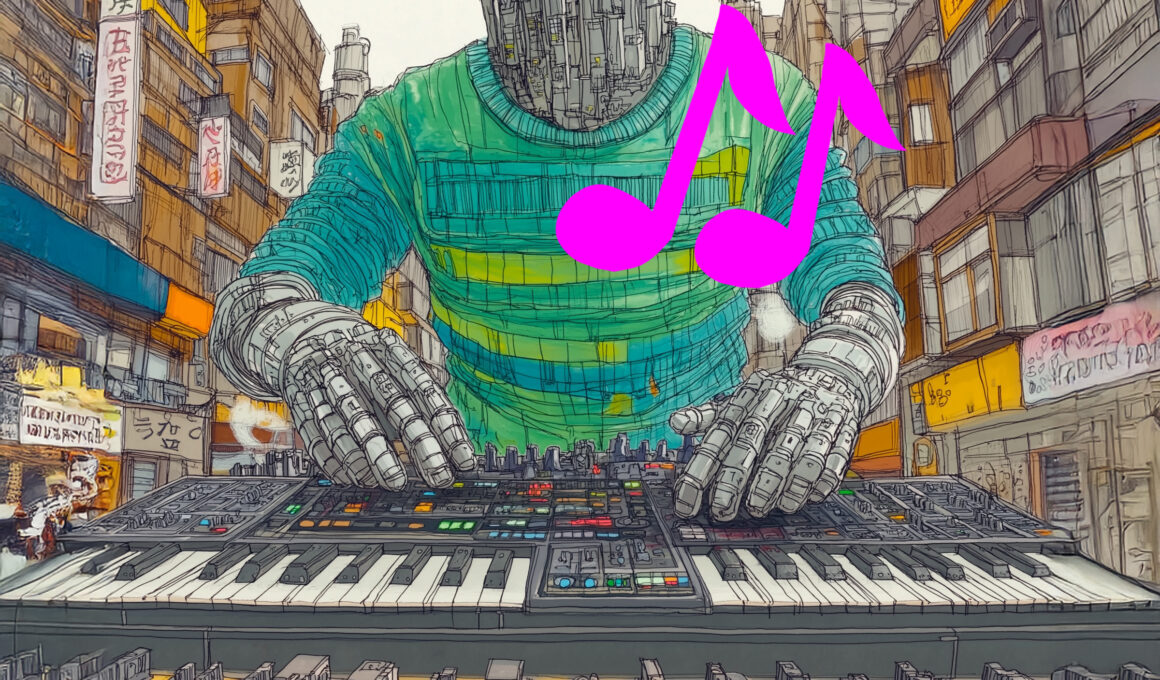The leaked announcement of Spotify’s ambitious plan to launch 42 AI-powered entertainment venues across mainland USA marks a watershed moment in the evolution of live music – or perhaps more accurately, signals its demise as we once knew it. The venues, which will feature artificially generated performers presented through advanced holographic and screen-based systems, represent the logical extension of the streaming giant’s controversial “Perfect Fit Content” (PFC) program into the physical world.
The Genesis: From Streaming Efficiency to Physical Spaces
To understand how we arrived at AI concert venues, we need to examine Spotify’s gradual transformation of music from art to utility. The company’s internal PFC initiative, recently exposed by Harper’s Magazine, revealed how Spotify systematically replaced human musicians with AI-generated content on its most popular playlists. This wasn’t simply cost-cutting – it reflected a fundamental shift in how the company viewed music’s role in contemporary society.
A former Spotify executive, speaking on condition of anonymity, explained the company’s evolution: “We discovered that most people don’t actually care about music any longer, we like to think we helped with this, instead they simply want some background sounds that enhance whatever they are doing. In this case the live venues offer alcohol, indoor rock climbing, group fitness classes, just to list a few. Music is a service, and we’re extending it into the real world.”
This brutally honest assessment might shock music purists, but the data supporting it is compelling. Spotify’s internal research showed that a significant portion of its users couldn’t distinguish between tracks created by human artists and those generated by AI, particularly in genres like ambient, lo-fi, and background music. When the company began quietly replacing human-created content with AI-generated alternatives on its popular playlists, user engagement actually increased in many cases.
The New Concert Experience
The AI venue network, dubbed “Spotify Live” (though perhaps “Spotify Simulated” would be more accurate), represents a radical reimagining of the concert experience. Each location combines elements of a traditional music venue with modern fitness facilities, bars, restaurants, and social spaces. The artificial performers – some original AI creations, others digital recreations of existing artists – are presented through a combination of high-resolution displays and holographic projections.
What makes these venues particularly interesting is their adaptive nature. Unlike traditional concerts where the setlist is predetermined, the AI performers can adjust their performance in real-time based on crowd response, time of day, and even the specific activities taking place in different areas of the venue. A morning yoga session might feature ethereal ambient sounds, while the evening crowd might experience high-energy dance music – all generated on the fly by the same AI system.
The Death of Authenticity or the Birth of Honesty?
Critics have been quick to decry these venues as the final nail in the coffin of authentic musical experience. However, defenders of the concept argue that it simply makes explicit what has been implicit in modern music consumption for years. “At least we’re being honest about it,” says Dr. Sarah Chen, a cultural theorist who studies digital entertainment. “For decades, we’ve pretended that manufactured pop stars were authentic artists while knowing they were products of careful corporate calculation. Is an AI performer really any less authentic than a human artist who doesn’t write their own songs, uses auto-tune, and lip-syncs at concerts?”
The Economic Implications
The financial implications of this shift are significant. Traditional concert venues face numerous challenges: booking artists, managing tours, dealing with cancellations, and handling the various demands of human performers. Spotify’s AI venues eliminate these complications while maintaining consistent quality control. The company can also optimize its revenue streams by adjusting cover charges based on real-time demand and cross-promoting its streaming service.
For musicians, particularly those in the genres most affected by AI replacement, the outlook is concerning. While some artists have found ways to adapt – either by licensing their likeness to Spotify for AI recreation or by focusing on more experimental and personal forms of performance – many face an increasingly challenging landscape for making a living through live performance.
The Social Dimension
Perhaps the most interesting aspect of these venues is how they reflect and reinforce changing attitudes toward music and entertainment. The integration of fitness classes, climbing walls, and other activities suggests that music has become fully subordinate to other forms of entertainment – no longer the focus, but merely an enhancement to other experiences.
Dr. Chen notes: “What we’re seeing is the final stage of music’s transformation from art form to ambient utility. Just as we no longer gather around the radio to actively listen to programs, fewer people attend concerts purely for the music. The experience has become entirely secondary to the social aspect.”
The Technology Behind the Experience
The technical infrastructure supporting these venues is impressive. Each location features a proprietary AI system that generates music and visuals in real-time, drawing from a vast database of musical patterns, visual elements, and performance behaviors. The system can create convincing performances across multiple genres, complete with realistic stage presence and crowd interaction.
The holographic and display technologies used are equally sophisticated, employing advanced projection mapping and environmental sensors to create immersive experiences that adapt to the space and audience. While not quite photorealistic, the artificial performers achieve what one engineer calls “functional believability” – they’re real enough to serve their purpose as entertainment focal points.
Cultural Implications and Future Prospects
The launch of these venues raises profound questions about the future of live music and cultural experience more broadly. If successful, the model could expand beyond music to other forms of performance art. Already, there are rumors of Spotify developing AI comedians and theatrical performances for future venues.
Some cultural critics see this development as part of a broader trend toward what might be called “ambient entertainment” – experiences that require minimal engagement and serve primarily as background to social interaction and other activities. Others view it more optimistically as the democratization of entertainment, making high-quality experiences more accessible and consistent.
The Human Response
Early user reactions to the venues have been mixed but largely positive, particularly among younger demographics who have grown up with streaming and AI-generated content. Many appreciate the reliability and consistency of the experience, while others value the multi-purpose nature of the spaces.
“It’s just easier,” says Marcus Thompson, a 23-year-old regular at one of the beta test locations. “You know exactly what you’re getting, the sound is always perfect, and if you don’t like what’s playing, it’ll change soon enough. Plus, I can work out, have a drink, and hang out with friends all in the same place.”
Looking Ahead
As Spotify rolls out these venues across the country, the impact on the traditional live music industry could be severe. Small venues, already struggling in many areas, may find it difficult to compete with the consistency and multi-purpose appeal of AI-powered alternatives. However, this might also create opportunities for more specialized, authenticity-focused venues that cater to audiences seeking genuine human performance.
The success or failure of this venture could determine the future direction of live entertainment. If profitable, we can expect other companies to follow suit, potentially leading to a landscape where AI-generated performance becomes the norm rather than the exception.
Conclusion: A New Cultural Paradigm
Spotify’s AI venue network represents more than just a new business model – it’s a manifestation of fundamental changes in how we consume and value cultural experiences. Whether this represents progress or decline likely depends on one’s perspective, but its significance cannot be denied.
As we move forward, the key question may not be whether AI will replace human performers (in many contexts, it already has), but rather what role remains for human-created music in a world where perfect, algorithmically-generated entertainment is always available. The answer might lie not in competing with AI on its terms, but in emphasizing the imperfect, unpredictable, and deeply human aspects of performance that no algorithm can truly replicate.
For now, Spotify’s bet on AI venues suggests that for many consumers, those human elements matter less than convenience, consistency, and integration with other activities. Whether this represents the end of live music or merely its evolution into something new remains to be seen, but one thing is certain: the relationship between music and society has fundamentally changed, and there’s no going back.






